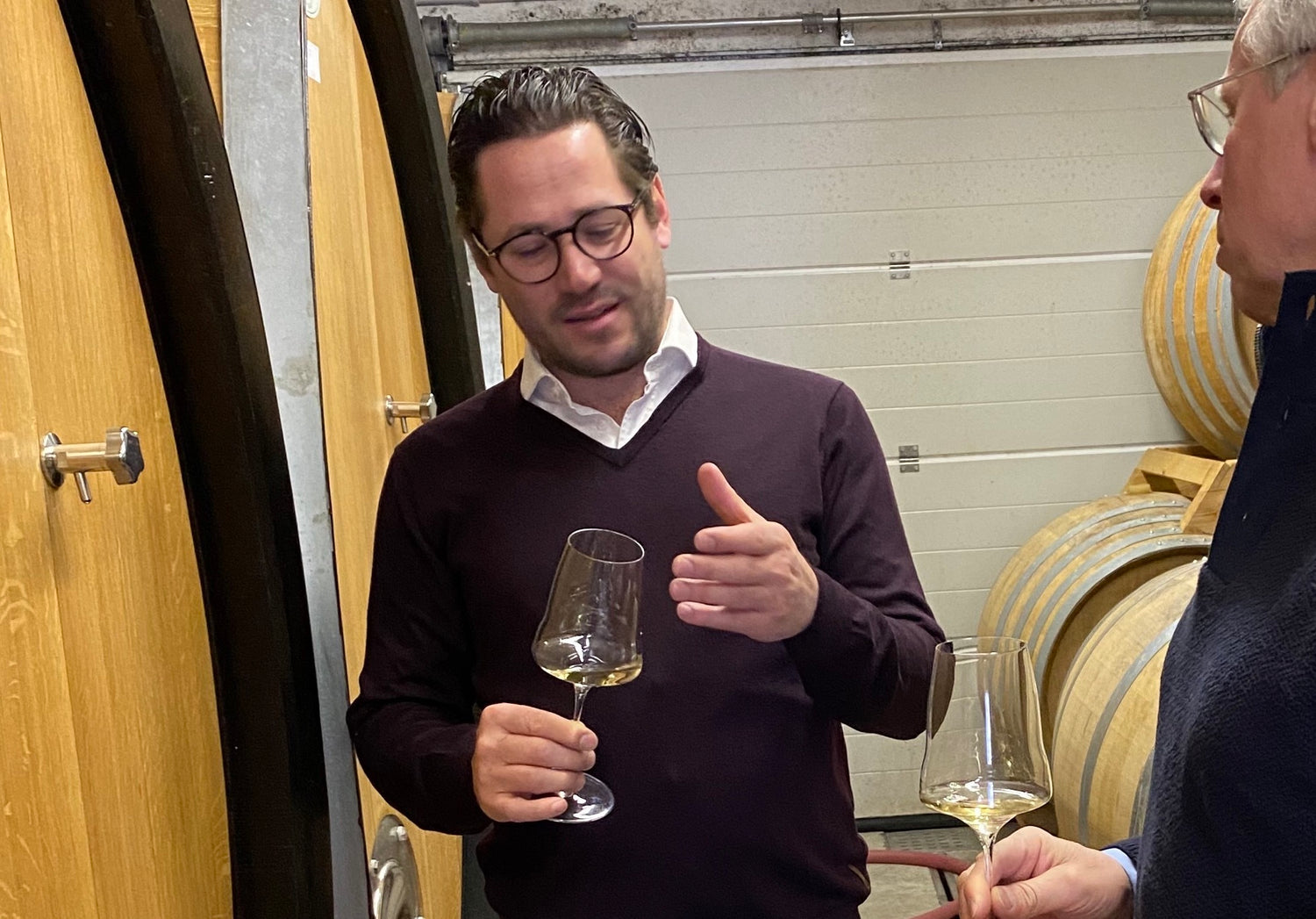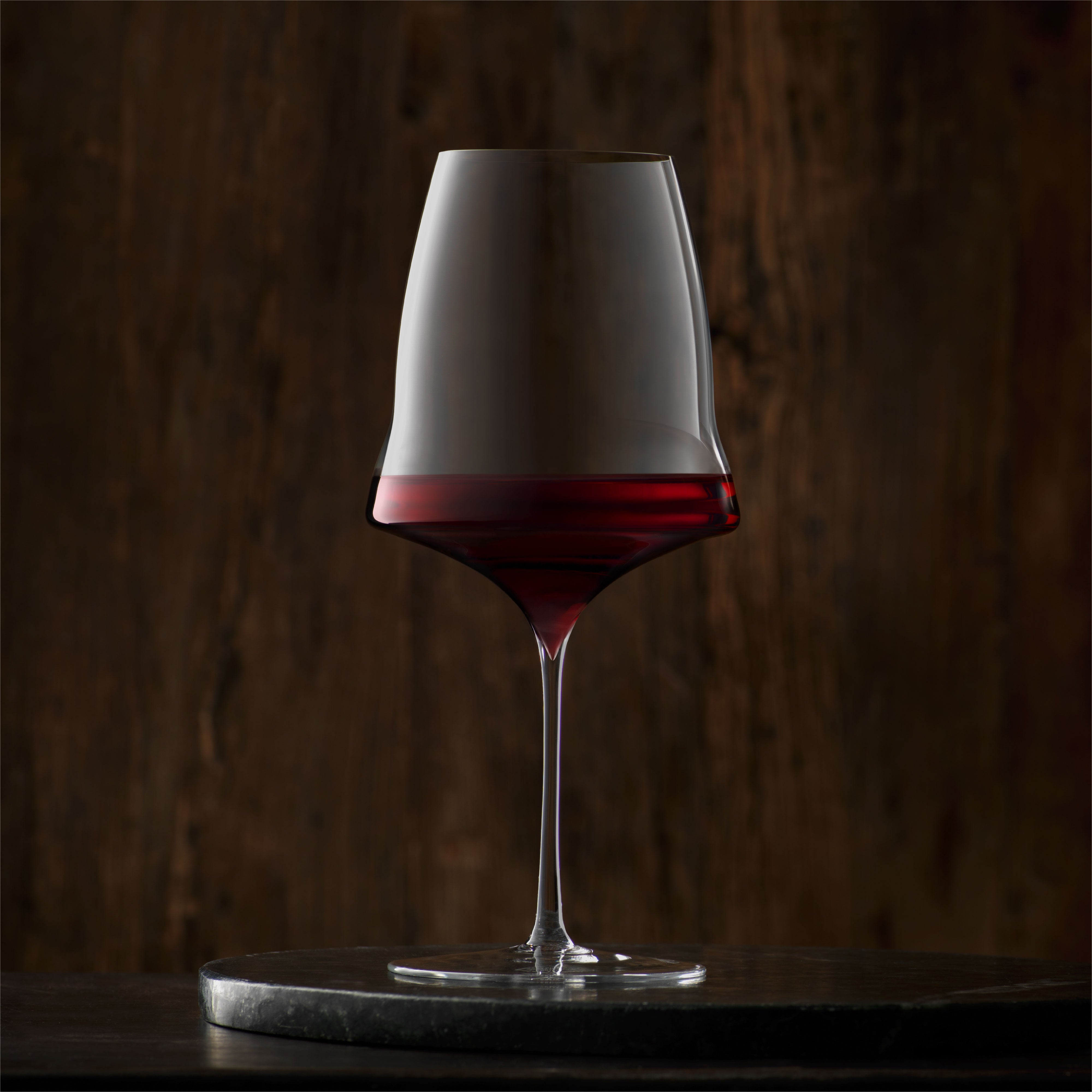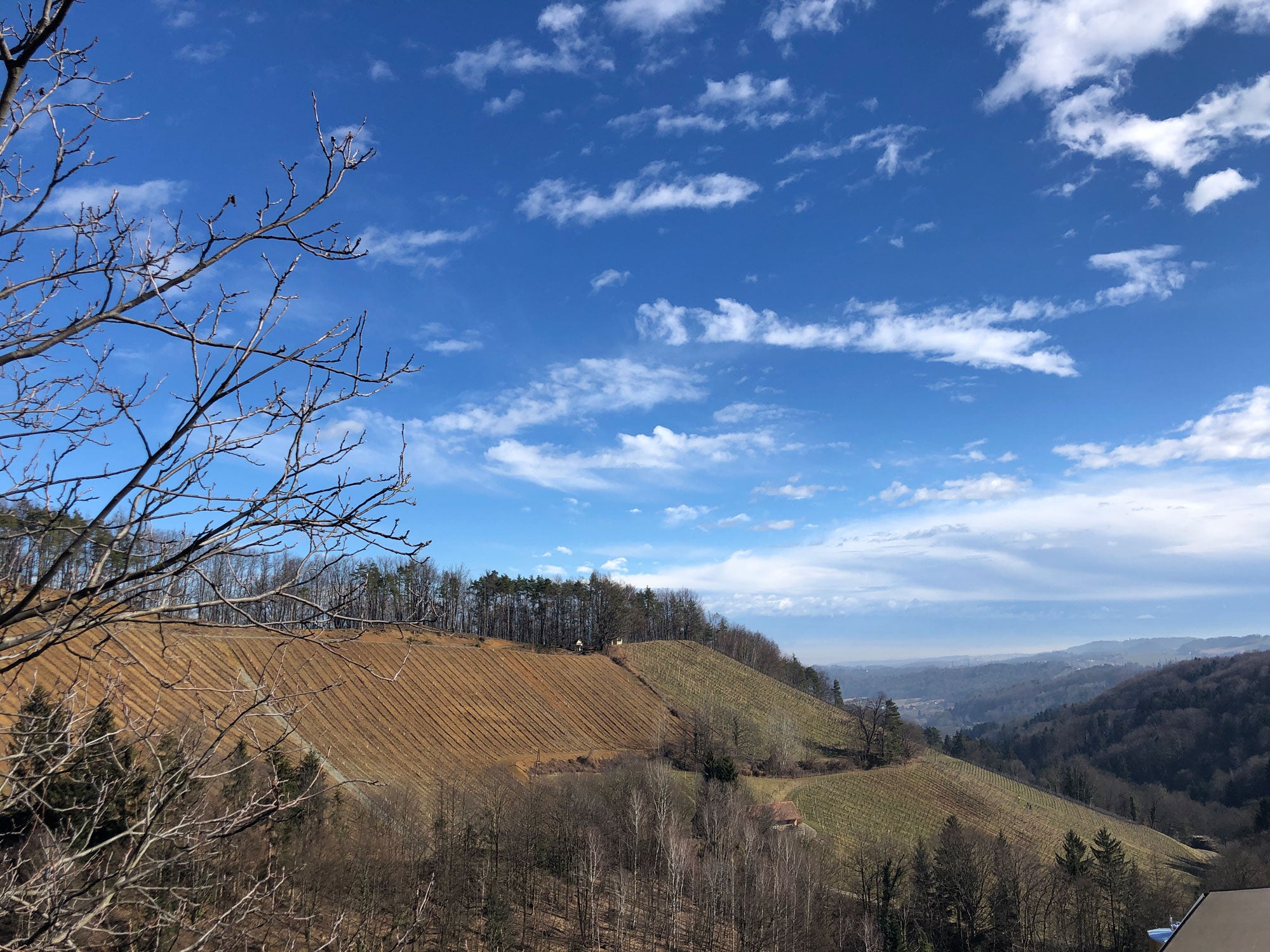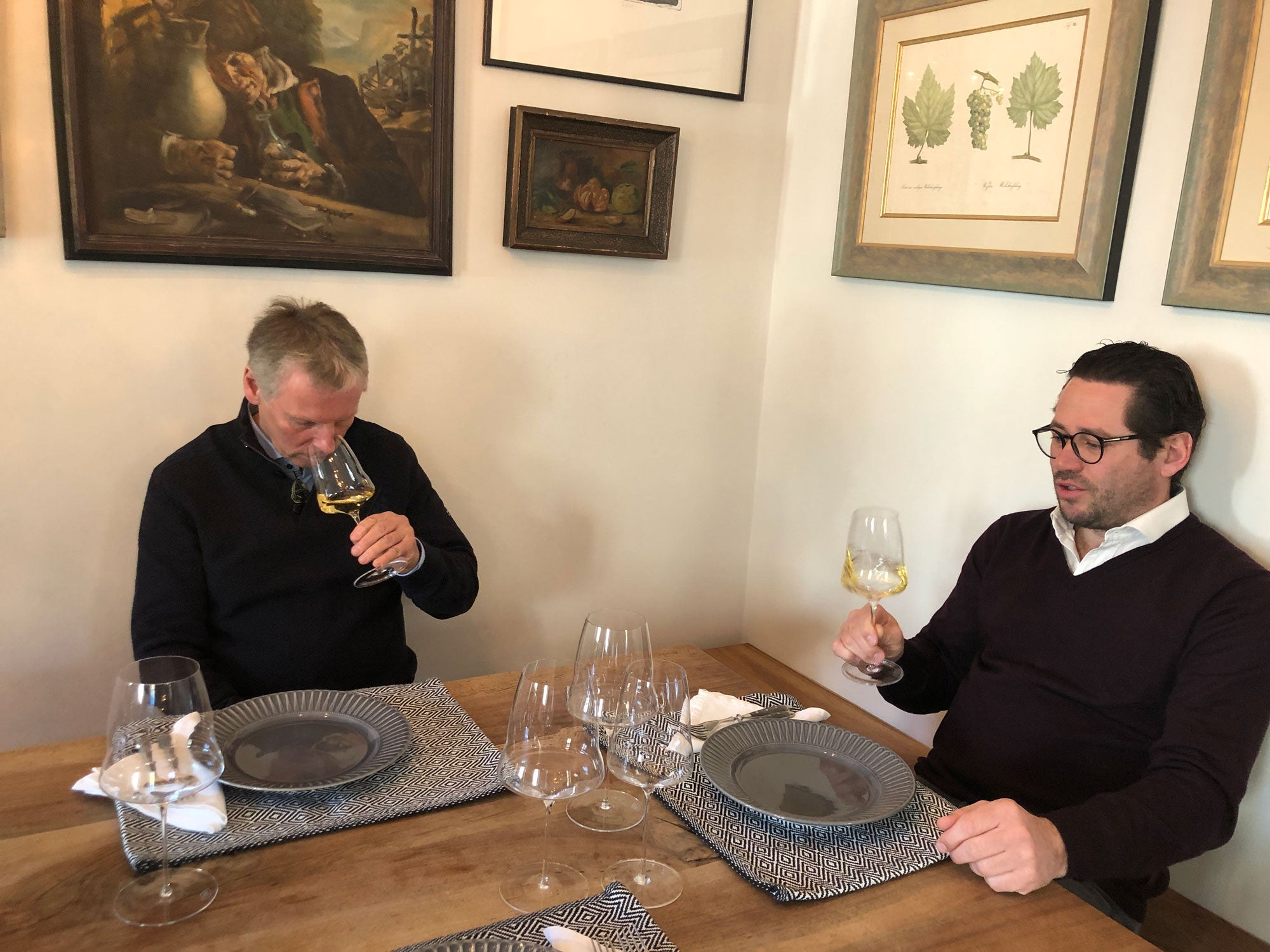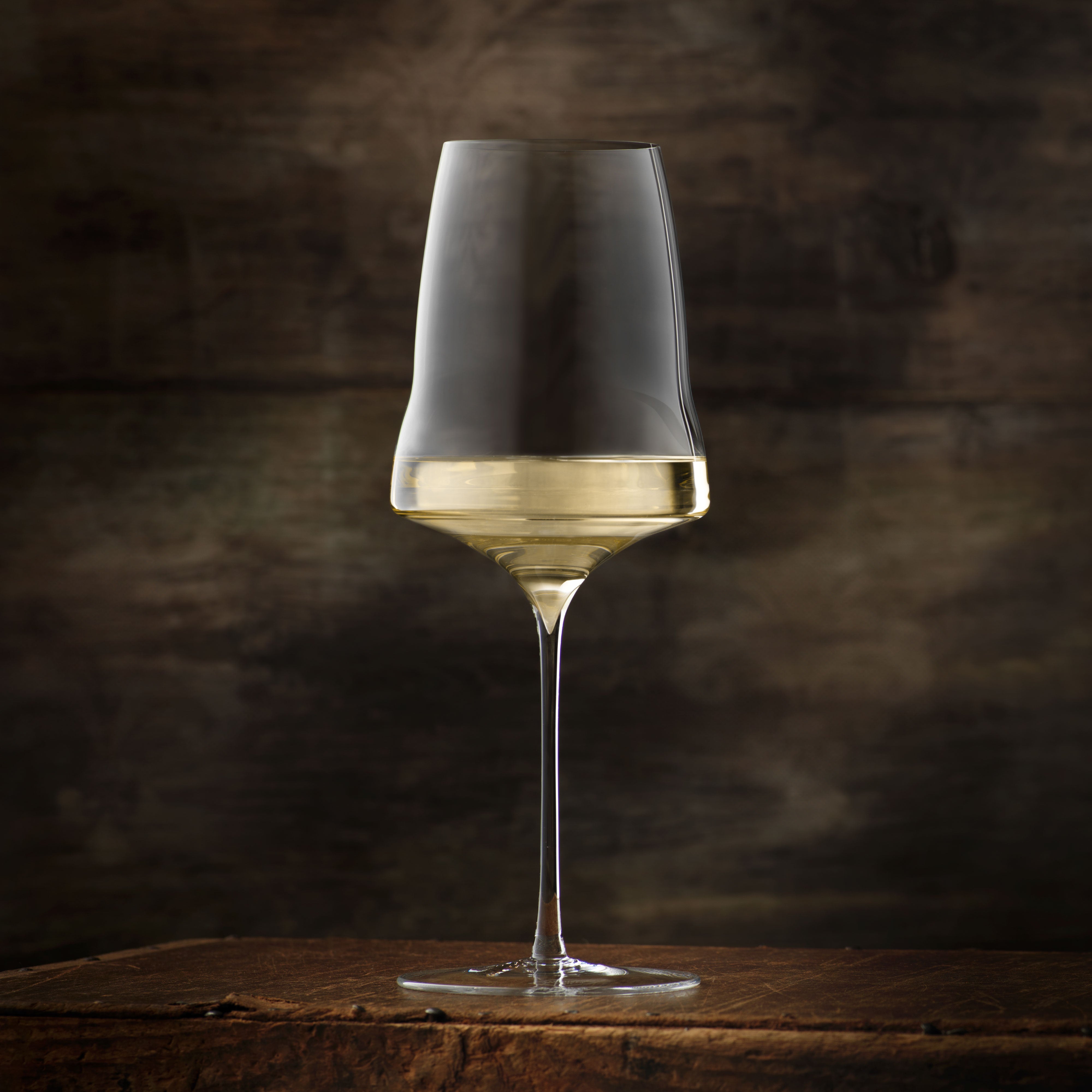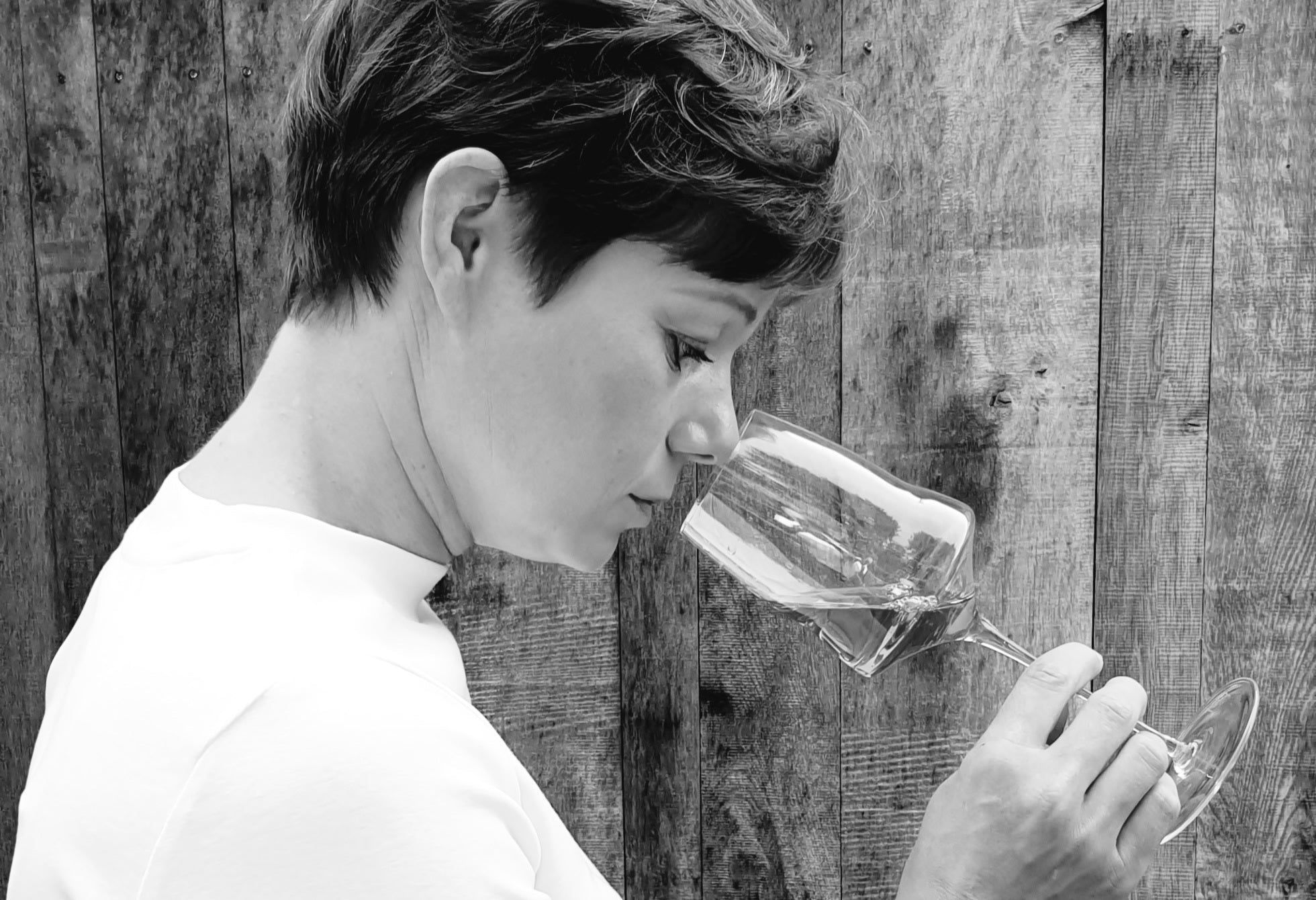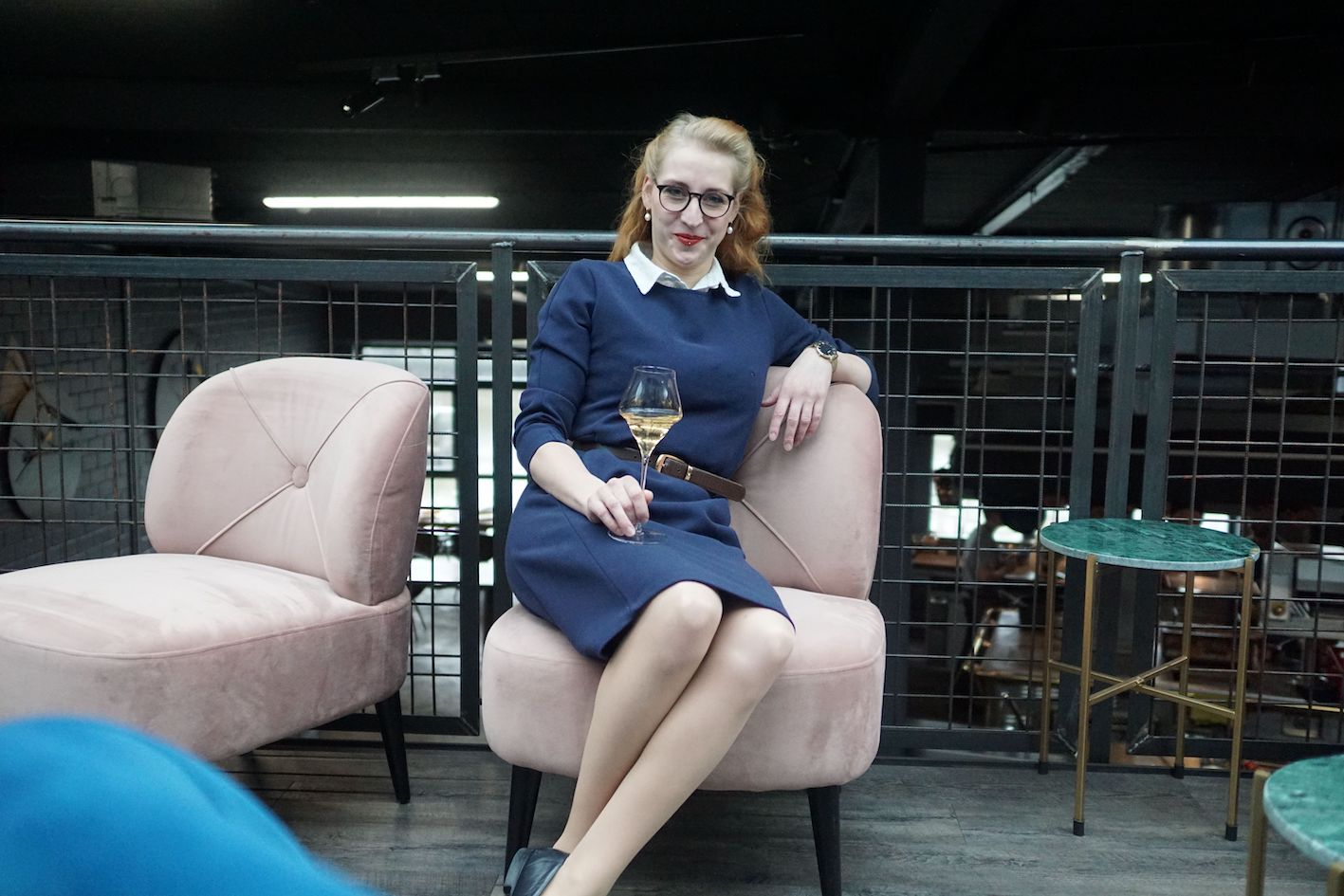Winegrower Hannes Sabathi produces stunning Sauvignon blancs in one of Europe's loveliest cultural landscapes. We met him for an interview on the Kranachberg.
South Styria, Ash Wednesday.
We and our glass designer, Kurt Josef Zalto, are on the way to winegrower Hannes Sabathi. The air is cold and wet, with just a small sign pointing us towards the estate. The narrow street serpentines its way through the surreal, fog-shrouded landscape. We pass a dark patch of forest, followed by a deserted house on the right, desolate and eerie, with a barren tree out in front. Which makes our arrival at the summit all the more dazzling. The view over the mountains, draped with layer upon layer of fog, is breathtaking.
Hannes Sabathi and his young colleague Alex are there to welcome us warmly. Together we climb a hill, allowing Hannes to explain why the soil of the Kranachberg is so special. From up above, one can see his charming house. And behind it, the expansive beauty of the South Styrian landscape. Time for the first questions.
Hannes, you have three older sisters. Yet it fell to you, the baby of the family, to continue operations at your parents’ farm. Why?
“I didn’t have a choice. I was the last one and my sisters had already chosen different paths. So I went to wine school and made my first wine at just 15. At 18, I officially joined the company. I took full control of the estate when I was 25.”
You took your parent’s mixed agricultural model and focused it squarely on wine. Why?
“Because it was the only part of farming that really interested me. The potential inherent to the sites was gigantic from the start — I simply had a desire to draw the best out of the soils. Besides that, at 18 wine was a lot cooler that other parts of farming!” (laughs)
“Fantastic soil, fantastic wine” is a well-known quote of yours. What exactly do you mean by that?
“The soil makes the wine! The origins of our wines have influenced me for as long as I can remember. For me, wine is nothing less than the liquid aggregate state of the soil in which it grows. To capture the purity of the soil, to portray the character that speaks from it — that is my understanding of being close to the earth. The entire region is now following along this same path. We’re blessed here with entirely distinctive, varied and character-rich soils. That diversity is what we’re trying to convey through our wines.”
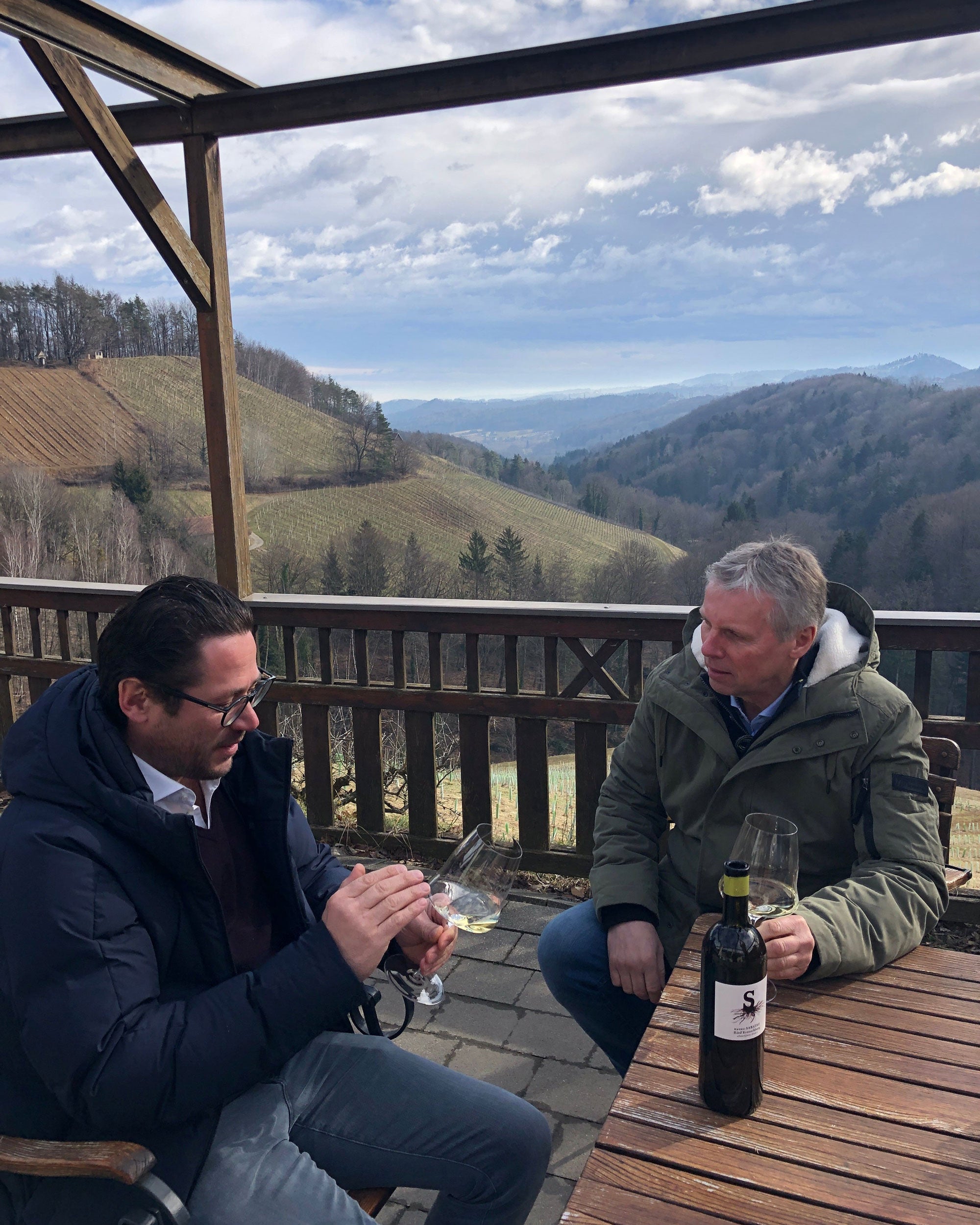

In Germany, similar to Austria, origin is one of the factors that defines the quality of wine. What are your best sites and what distinguishes them?
“At 400-520 meters in elevation, the steep Kranachberg site sits quite high, with gravel and quartz sands. It gives rise to truly distinctive wines of vegetal and spicy elegance. Ried Jägerberg is dominated by gray calcareous marl. The powerful, heavy soil is terrifically suited for raising grapes from the Pinot family. The wines are deep, taut and layered, just like the soil feels in your hand. Ried Kehlberg by contrast is almost entirely comprised of very hard dolomite. Cool, highly focused wines are the result. True stony landmarks!
The wines from our various single sites couldn’t be more different, and precisely that is what makes it so fascinating for me!”
Hannes’ descriptions make us all the more eager to taste the wines. We head down to the cellar with its large oak casks. Time for a barrel tasting and a few questions about the wine and choosing the right glasses.
Might you describe your wine philosophy for us? What are the things you're watching for in the cellar and the vineyard?
“I am a fan of the old wine world. Traditional European winegrowing artistry, with a focus on the vineyards and the vines. In the cellar, I work as low intervention as possible. Controlled inaction. I very much like working with oak casks. The wines undergo wild ferment. Only the base wines are raised in steel tanks.
Our bottles are primarily planted with Sauvignon Blanc, Gelber Muskateller, Weißburgunder, Grauburgunder, Chardonnay and Welschriesling. These varieties are what thrive best on our soils.
Our goal is to make wines that are distinctly shaped by their origins. The new origin system here in Steiermark, with Gebietswein (estate), Ortswein (village) and Riedenwein (single site) are a fine tribute to those distinctive factors.”
The right glass is essential to giving voice to that precise sense of origin. What is your view of glasses in this context?
“As an Austrian, we’re quite spoiled. We have a grand stemware culture. Even the simplest of wine taverns here has good glasses. Which is why having the right wine glass has always been important to me. What matters is how the wine will show in the glass.
The market has made huge strides in the past 20-30 years — the quality of the glass has risen enormously. Anybody who has tried tasting the same wine from different glasses can attest: the taste experience can be worlds apart!”
How did you come into contact with our glasses?
“Matthias Breitsameter was the sommelier at the renowned Forsthofgut. We get on quite well and he showed me the glasses. We tasted wine in Gabriel, Zaltoglas, Riedel and Josephinenhütte glasses. The Josephine totally surprised me — the glass presented the wines just like I’d imagined. Its new vocabulary of shapes and taste experience convinced me.”
You exclusively produce whites. Which of our glasses are your favorites for serving white wines, and when do you use them?
“At this point we’re using Josephinenhütte glasses in the vinothek and for our wine presentations. I'm generally a fan of a larger glass, which allows the wine to develop well. I use the white wine glasses exclusively for my young Südsteiermark DAC Gebietswein, which is raised in steel tanks. For the Ortswein and Lagenwein, which are raised in large wooden casks, and for aged Gebietswein, I only ever use the red wine glass.”
A glance outside reveals that the sun is making an appearance. Fantastic light. The landscape around us, which had seemed so barren this morning, takes on a softer air and beckons with irresistible charm. We take some photos with Hannes and Kurt Josef Zalto, the creator of our glasses. The pair are engrossed in their own conversation about Hannes’ true passion: Sauvignon blanc!
I see a great number of Sauvignon blancs in your collection. You clearly have a soft spot for that variety. How do Steiermark's Sauvignon blancs fare in comparison with the grand Sauvignon blanc regions of the world, like Sancerre in the Loire Valley or Marlborough on the south island of New Zealand?
“Our Rieds benefit from the warm moisture and continental character of Südsteiermark, which is made to order for Sauvignon blanc. When I first started around 20 years ago, I naturally looked at the famous Sauvignon blanc producers of France and drew inspiration from them. I’ll offer the bold prediction that in 20 years’ time, young winegrowers will be orienting themselves toward Südsteiermark when it comes to Sauvignon blanc. Because by that point you won't be able to have that conversation without accounting for our Sauvignon blancs. We as a region are developing into the Sauvignon specialists of the Old World. The wines are fresh, elegant, slender, with wonderful fruit and varietal typicity. The warm days and cold nights deliver a solid acid backbone, which gives the wines a strong cellarability. The most legendary Sauvignon blanc from our region, to my mind, was from 1949. Incredible. So fresh...!”
And then the shop talk is done. Hannes’ wife Karin calls us to eat. By the door to the house are two pairs of rubber boots — small and large. The house may look traditional from the outside, but inside it is modern, with cozy furnishings. Designer pieces meet old paintings, exposed stone encounters a stainless steel kitchen. The table is set wonderfully.
It is Ash Wednesday, and as a starter we are served traditional herring salad. At Hannes’ request, Karin has cooked his favorite dish: "Obauer-Nudeln" with zucchini and Styrian pumpkin seed oil – from the estate’s own production, of course. Delicious! We are touched by this tremendous hospitality, and feel quite at home. We take our espressos outside in the sunshine. We’re hopelessly in love. In the landscape, the people, and the unbelievably good Südsteiermark wine. Time for a closing statement...
What makes South Styria so special for you? Why should more people vacation here?
“The region is blessed by nature with an amazing landscape. Gentle hills. Luscious green. Surely one of Europe's loveliest cultural landscapes. Many hotels, restaurants and winegrowing estates located directly on the vineyards, with picturesque views. There are inns everywhere offering tremendous food and top Steiermark wines. From rustic wine taverns to award-winning restaurants. All at a very high level. The economy is shaped by small family-run restaurants, tradesman shops and tourist offerings. Which makes the people here all the more open, hearty and hospitable. South Styria is always worth the trip!“
We agree. We’ll see each other again, dear Hannes!
